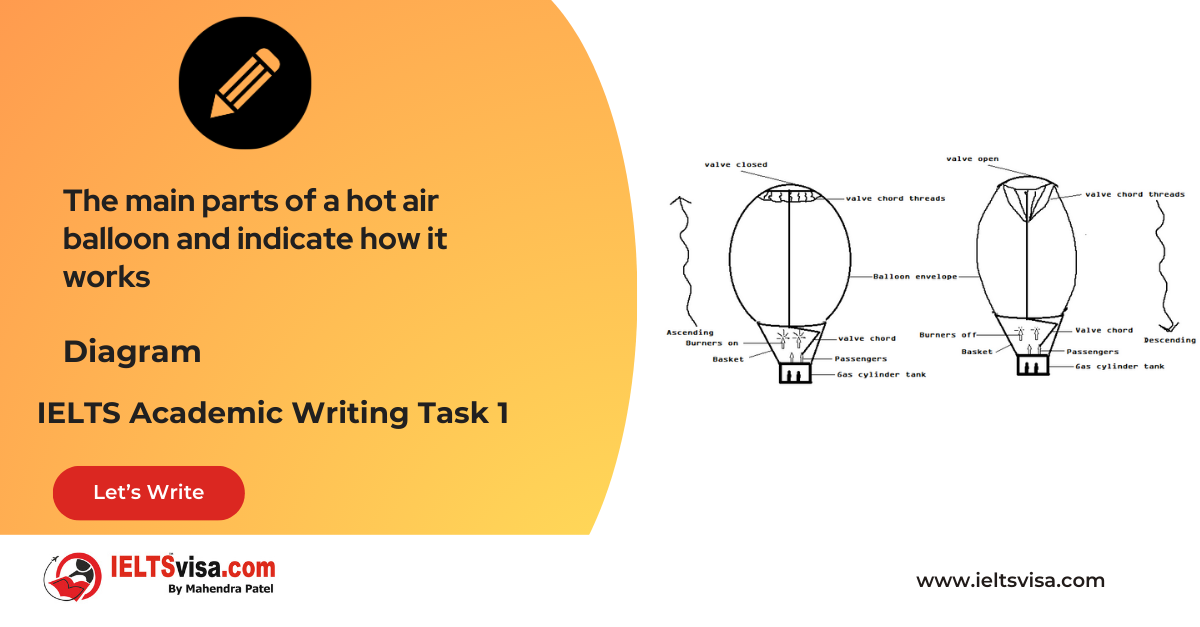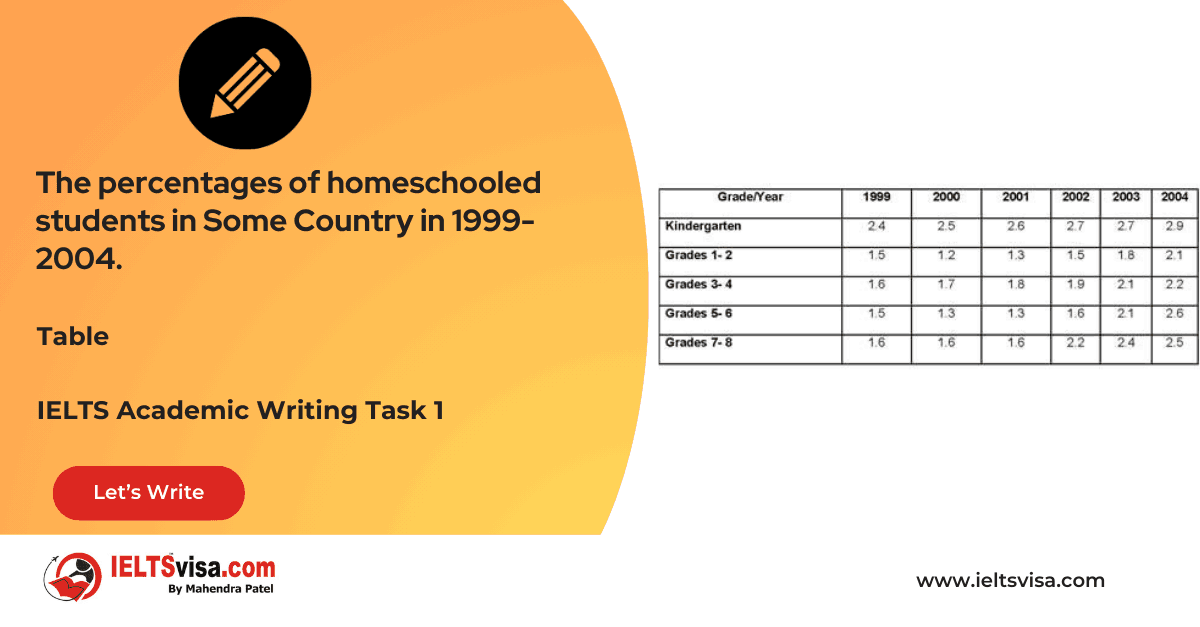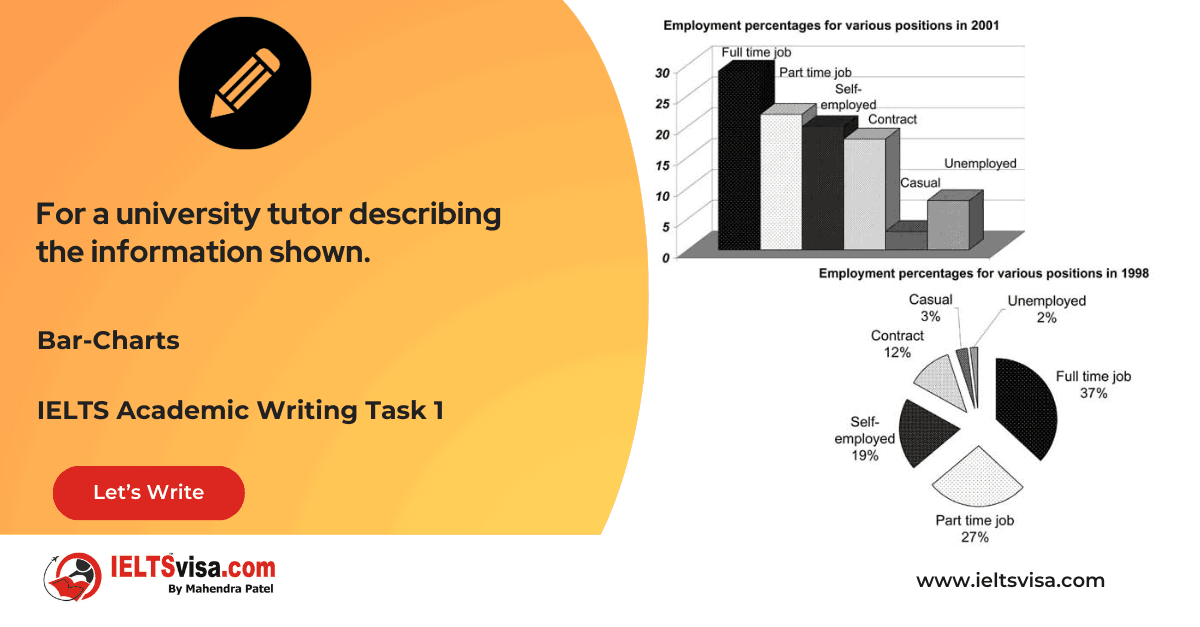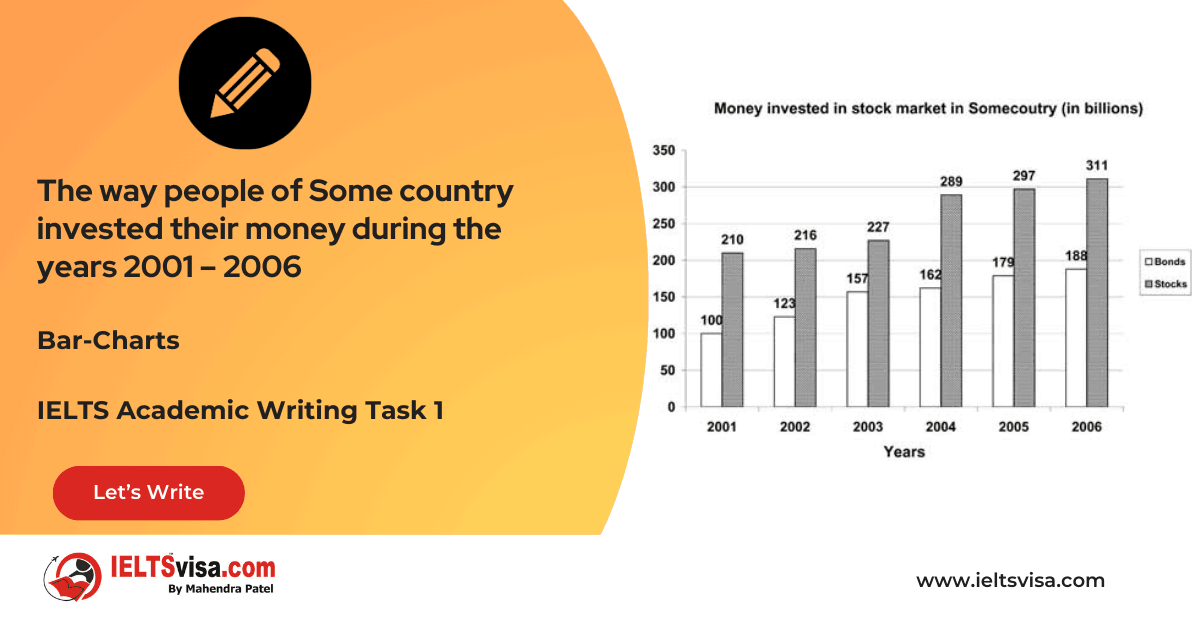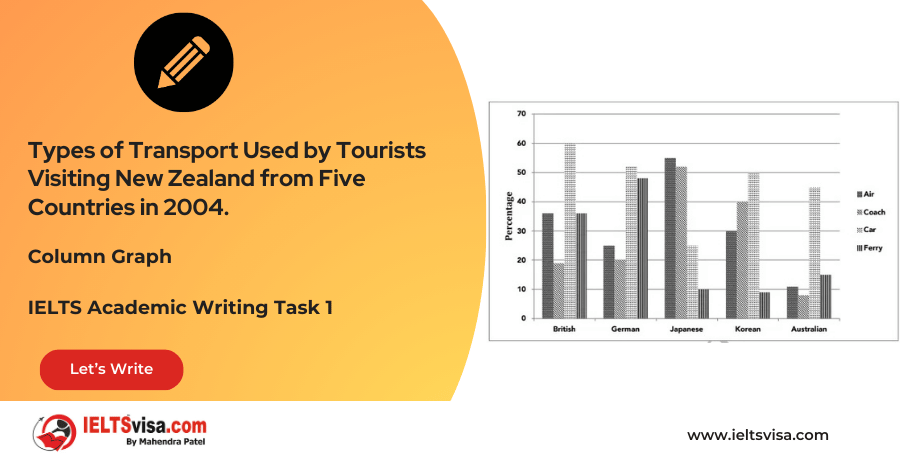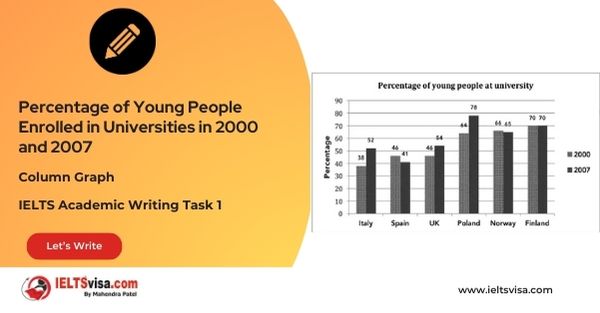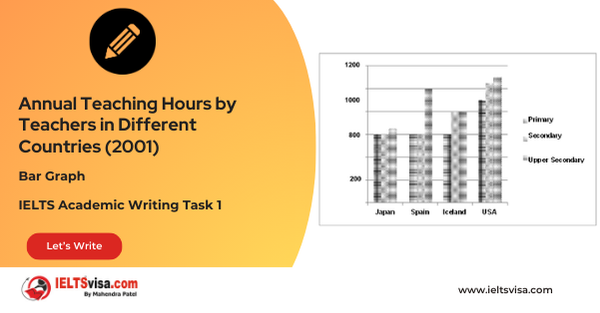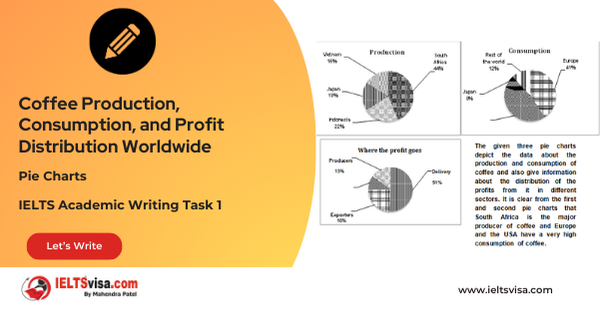Why you should study many real test examples of each type
IELTS Academic Writing Task 1
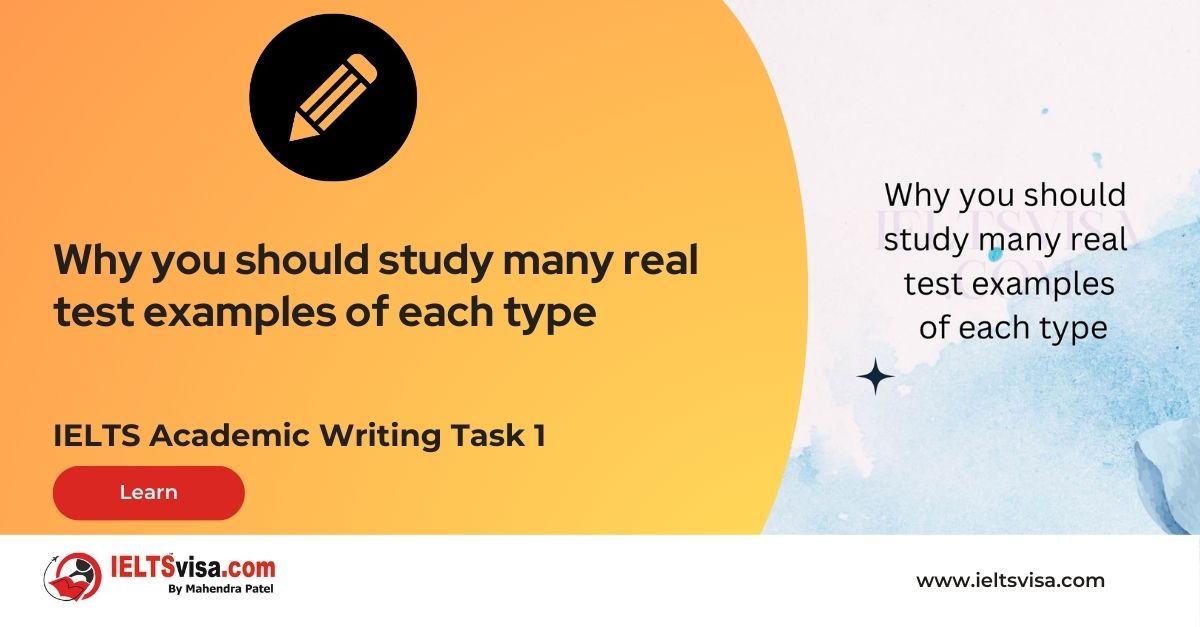
Studying real test examples of each type is highly beneficial when preparing for the IELTS exam. Here are some compelling reasons why it is important to study multiple real test examples:
1. Familiarity with Task Requirements:
By reviewing various examples of each task type, you become more familiar with the specific requirements, instructions, and expectations for each task. This helps you understand the task prompts, identify key information, and structure your response effectively.
2. Understanding Scoring Criteria:
Each task in the IELTS exam is assessed based on specific scoring criteria. By studying multiple real test examples, you gain insights into how these criteria are applied and what the examiners look for in a high-scoring response. This understanding allows you to align your approach and focus on the aspects contributing to a better score.
3. Exposure to Different Topics and Formats:
The IELTS exam covers a wide range of topics and question formats. You expose yourself to different subject matters, data representations, and writing styles by studying multiple examples. This exposure helps you develop flexibility in adapting your writing to various topics and formats, which is crucial for success in the exam.
4. Identification of Patterns and Strategies:
By studying multiple examples, you can identify common patterns, structures, and strategies that successful candidates use. This includes approaches to paraphrasing, organising ideas, using appropriate vocabulary and grammar, and presenting information effectively. Learning from these examples allows you to adopt and adapt these strategies to improve your writing skills.
5. Practice and Skill Development:
Studying real test examples provides an opportunity for focused practice. You can apply your knowledge, practice your writing skills, and evaluate your performance by analysing and attempting to answer the questions based on the examples. This active engagement helps improve your proficiency in task-specific writing, enabling you to become more confident and competent in tackling similar tasks during the exam.
6. Error Identification and Correction:
Real test examples often exhibit common errors or weaknesses that candidates make. By studying these examples, you can identify and understand typical grammar, vocabulary, coherence, or task response mistakes. Recognising these errors helps you avoid them in your writing and enhances your responses’ overall quality.
In conclusion, studying real test examples of each type is a valuable part of your IELTS preparation. It provides you with a deeper understanding of the task requirements, scoring criteria, and effective strategies. Moreover, it allows you to practice and develop your writing skills, become familiar with various topics and formats, and learn from common errors. Therefore, make sure to include studying real test examples as an integral part of your IELTS preparation to maximise your chances of success in the exam.




Our Books
Master IELTS Speaking Part 1
IELTS Writing Task 1 Book
IELTS Writing Task 2 Book
Practice IELTS Other Modules
IELTS Listening
The IELTS Listening test assesses how well you can understand spoken English in various contexts. It lasts about 30 minutes and is divided into four sections with a total of 40 questions. The listening tasks become increasingly difficult as the test progresses.
IELTS Academic Reading
The IELTS Academic Reading section assesses your ability to understand and interpret a variety of texts in academic settings. It is designed to evaluate a range of reading skills, including skimming for gist, reading for main ideas, reading for detail, understanding inferences, and recognizing a writer's opinions and arguments.
IELTS Speaking
The IELTS Speaking test assesses your ability to communicate in English on everyday topics. It lasts 11-14 minutes and consists of three parts: introduction, cue card, and a discussion based on the cue card topic.
IELTS General Reading
IELTS General Reading tests your ability to understand and interpret various types of texts. Here are some key areas and types of content you can expect to encounter in the reading section, along with tips for effective preparation.
IELTS Academic Writing Task 1
In IELTS Academic Writing Task 1, you are presented with a visual representation of information, such as graphs, charts, tables, or diagrams, and you are required to summarize, compare, or explain the data in your own words.
IELTS General Writing Task 1
In IELTS General Writing Task 1, you are required to write a letter based on a given situation. The letter can be formal, semi-formal, or informal, depending on the prompt. Here’s a breakdown of the key components to include in your letter
IELTS Academic Writing Task 2
In IELTS Academic Writing Task 2, you are required to write an essay in response to a question or topic. Here’s a guide to help you understand the essential elements of this task
IELTS Exam Tips
To succeed in the IELTS exam, practice regularly, familiarize yourself with the test format, improve your vocabulary, develop time management skills, and take mock tests to build confidence.
Grammer for IELTS
Grammar is the foundation of effective communication in English. Understanding tense usage, subject-verb agreement, and sentence structure enhances clarity and coherence in writing and speaking.
Vocabulary for IELTS
Vocabulary plays a crucial role in the IELTS (International English Language Testing System) exam, especially in the Speaking and Writing sections. Here’s an overview of why vocabulary is important and how it impacts your performance
RECENT IELTS SAMPLES QUESTIONS AND ANSWERS
Task 1 – Diagram – A conference hall built in 1981 and planned for 2020
20:00 Start Pause Stop [df_adh_heading title_infix="IELTS Writing Task 1 Question" use_divider="on"...
Task 1 – Table – The percentages of homeschooled students in Some Country in 1999-2004.
20:00 Start Pause Stop [df_adh_heading title_infix="IELTS Writing Task 1 Question" use_divider="on"...
Task 1 – Table – For a university tutor describing the information shown.
20:00 Start Pause Stop [df_adh_heading title_infix="IELTS Writing Task 1 Question" use_divider="on"...
Task 1 – Bar-Charts – The way people of Some country invested their money during the years 2001 – 2006
20:00 Start Pause Stop [df_adh_heading title_infix="IELTS Writing Task 1 Question" use_divider="on"...
Task 1 – Diagram – Rainwater Harvesting and Conversion to Drinking Water in an Australian Town.
20:00 Start Pause Stop [df_adh_heading title_infix="IELTS Writing Task 1 Question" use_divider="on"...
Task 1 – Column graph – Percentage of Young People Enrolled in Universities in 2000 and 2007.
20:00 Start Pause Stop [df_adh_heading title_infix="IELTS Writing Task 1 Question" use_divider="on"...
Task 1 – Bar Graph – Annual Teaching Hours by Teachers in Different Countries (2001)
20:00 Start Pause Stop [df_adh_heading title_infix="IELTS Writing Task 1 Question" use_divider="on"...
Task 1 – Pie Charts – Coffee Production, Consumption, and Profit Distribution Worldwide
20:00 Start Pause Stop [df_adh_heading title_infix="IELTS Writing Task 1 Question" use_divider="on"...
Task 1 – Column graph – Types of Transport Used by Tourists Visiting New Zealand from Five Countries in 2004.
20:00 Start Pause Stop [df_adh_heading title_infix="IELTS Writing Task 1 Question" use_divider="on"...

